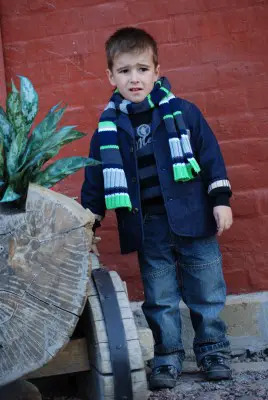The president of The Early Years Institute in Plainview, NY, provides tips for parents on how to help children deal with and understand natural disasters, including hurricanes, tornadoes, and storms.
Following a disaster like a hurricane, parents must first make sure they’ve met their children’s basic needs for food, heat, and shelter. Then they need to turn their attention to their children’s emotional needs. Children, particularly those under age 5, may have difficulty expressing their fears and they may not give voice to those needs until weeks after the traumatic event.
There are four basic psychological needs children have after a devastating event like Hurricane Sandy:
|
1. Accepting the events that have occurred 2. Identifying, labeling, and expressing emotions 3. Regaining a sense of mastery and control 4. Resuming age-appropriate roles and activities |
Process the event.

To help children deal with these processes, it is helpful to remember that preschoolers are likely to focus on the concrete details of the hurricane or the events associated with it. Because they are egocentric, young children will connect what they saw with what is important to them. They may draw the wrong conclusions about what caused the storm.
For example, children may think they caused the storm because of something they did. They may be telling themselves, “The hurricane came because I was being bad.” They will also generalize from the facts they know. They might think, “The storm blew my house away. If another storm comes, my new house will be gone.”
Children will become resilient in the face of adversity when they have safe, supportive environments and have access to caring, supportive adults. The most important thing parents can do is to make the child feel safe:
• Hold them and let them stay close to you.
• Make sure to keep them away from scary TV images and conversations.
• Do familiar things, like singing a song or telling a story you both like.
• Create a predictable routine, especially at bedtime with a book, or at bath time with a favorite toy.
When you do have to leave your children, make sure they know where you are going and when you will return.
Express feelings through stories and art.
Most importantly, allow children to express their feelings. Children “act out” as a way of asking for help. Preschoolers often talk aloud to themselves as they play, which is their way of expressing their thoughts. You can learn a lot about their thinking processes from their play.
 The National Child Traumatic Stress Network reminds us: “Difficult feelings equals difficult behavior.” Each child will express their needs differently. Some will exhibit anti-social behavior, aggression, or fighting. Others may change their eating or sleeping patterns, or even start bed-wetting. Some may become more clingy, have nightmares, cry more, start thumb-sucking, or have speech difficulties. By listening to your child and watching his behavior, you can follow his lead in terms of what he are trying to express. The best time to do this is when he is playing.
The National Child Traumatic Stress Network reminds us: “Difficult feelings equals difficult behavior.” Each child will express their needs differently. Some will exhibit anti-social behavior, aggression, or fighting. Others may change their eating or sleeping patterns, or even start bed-wetting. Some may become more clingy, have nightmares, cry more, start thumb-sucking, or have speech difficulties. By listening to your child and watching his behavior, you can follow his lead in terms of what he are trying to express. The best time to do this is when he is playing.
Help children tell their stories of what happened during and after the hurricane. Older children can write their stories and younger children can draw pictures. All children use play to tell their stories. They may start throwing blocks as a way to express what the hurricane felt like. You can help your child put names to their feelings, e.g., scared, angry, or sad.
Provide reassurance and be prepared for the future.
Tell them that it’s okay to feel that way. You can show your child the right way to behave, for instance saying, “It’s okay to be angry, but it’s not okay to hit others.” This anger can be expressed in stories and drawings. Make sure you have materials on-hand that can help children calm themselves, such as water and water props, finger paint, shaving cream, books, soft music, and puzzles. Bubbles are especially effective in helping children do breathing exercises, which is a terrific stress reducer. Materials that help children express feelings and emotions include books, writing and drawing supplies, dramatic play activities, equipment for outdoor play, and clay for pounding.
Sometimes it may be difficult to watch children’s play or listen to their stories. If it’s too hard, reach out and get support to help you figure out the best response. You can help your child best if you take care of yourself.
Finally, remember that children are very attuned to anniversaries. Hurricane Sandy occurred right around Halloween. As one 3-year old asked her mother during the storm, “What did Hurricane Candy bring?” Do not be surprised if children start to exhibit some of the same behaviors they show now come next year.
Dana E. Friedman, Ed.D., is president of The Early Years Institute in Plainview.
Also see: 5 Children’s Books to Help Kids Overcome Fear of Natural Disasters





















